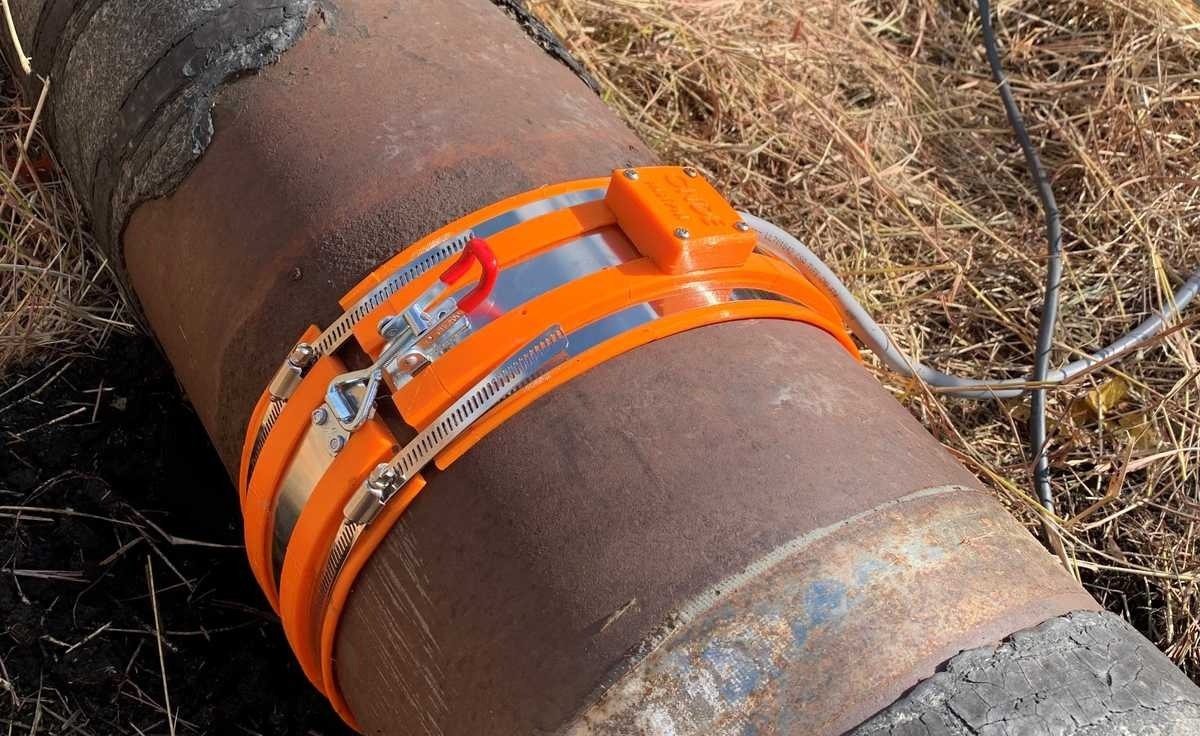Reviewed by Mila PereraOct 26 2022
Advanced transducers using ultrasonic-guided wave technology have been developed by Southwest Research Institute (SwRI) to identify pipe irregularities, helping users prevent leaks before they start.
 Southwest Research Institute (SwRI) has created the next generation of transducers that use ultrasonic-guided wave technology to detect anomalies in pipes, enabling users to prevent leaks before they start. The device, which utilizes the SwRI-developed Magnetostrictive Sensor (MsS®) technology, will be showcased at the American Society for Nondestructive Testing’s (ASNT) Annual Conference in Nashville, Tennessee, from October 31st to November 3rd. Image Credit: Courtesy of SwRI
Southwest Research Institute (SwRI) has created the next generation of transducers that use ultrasonic-guided wave technology to detect anomalies in pipes, enabling users to prevent leaks before they start. The device, which utilizes the SwRI-developed Magnetostrictive Sensor (MsS®) technology, will be showcased at the American Society for Nondestructive Testing’s (ASNT) Annual Conference in Nashville, Tennessee, from October 31st to November 3rd. Image Credit: Courtesy of SwRI
The device, which employs the SwRI-developed Magnetostrictive Sensor® (MsS®) technology, will be presented by SwRI personnel Vinogradov and Bartels at the Annual Conference of the American Society for Nondestructive Testing (ASNT) in Nashville, Tennessee, between October 31st and November 3rd, 2022, at booth 1219.
Pipeline corrosion resulting in leaks is very common. There are only a few current methods to detect defects before they cause leaks. Quite often, the pipe is repaired and re-inspected after a leak occurs. We’ve developed a technology that can consistently monitor the pipe’s condition, hopefully preventing leaks from happening in the first place.
Sergey Vinogradov, Staff Engineer, Southwest Research Institute
The technology is known as a Magnetostrictive Transducer (MsT) Collar and was first created in 2002 by SwRI. The upgraded version has a flat, thin design enabling it to be used on pipes in small spaces.
In tailored configurations, it can endure heat up to 400 °F. The novel, segmented MsT design also has eight sensors that allow the transducer to detect where in the pipe corrosion is taking place with greater accuracy.
The MsT Collar employs magnetostrictive sensors, which produce and receive guided waves that spread along an elongated structure, guided by its boundaries. This method enables the waves to move across long distances with minimal energy loss. In some instances, hundreds of meters can be scrutinized from a single location, though obstacles such as couplings would necessitate an extra sensor.
“Instead of using one sensor to cover an entire pipe circumference, allowing only the axial location of an anomaly to be measured, we now have eight sensors in the transducer,” Vinogradov said.
Each of the sensors is independently connected to the electronics so that all possible guided wave signals can be acquired. Algorithms combine this information to better detect and locate the anomaly both axially and circumferentially, and the growth of the corrosion can be monitored by examining data sets acquired over time.
Sergey Vinogradov, Staff Engineer, Southwest Research Institute
The MsS system can transmit data to a remote terminal through a wireless transmitter system or using a wired connection. It is built mainly for oil and gas transmission pipelines to stop expensive and damaging leakages before they start.
However, the technology is adaptable and has been utilized for other industrial pipes, such as those used for heating, water, or chemical plants.